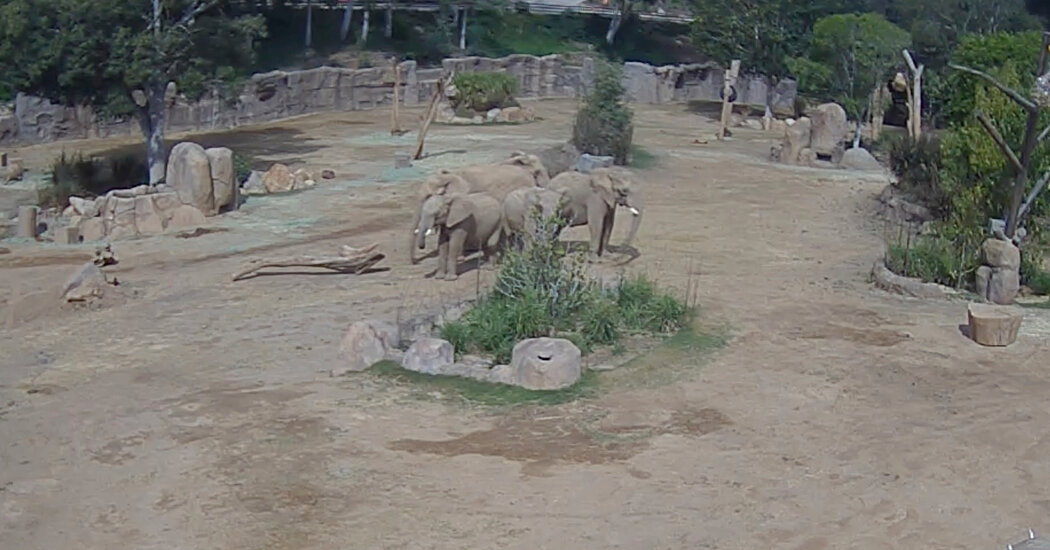Breaking News
After an Earthquake, These Elephants Knew Exactly Who to Follow: Mom

Elephants responded to the threat by adopting a defensive position known as “bunching,” a common reaction to danger, according to Joyce Poole, a conservation biologist with expertise in elephant behavior. “They feel safer when they are close together,” she explained.
When elephants bunch together, they typically position their tusks outward, extend their ears, widen their eyes, and stretch out their trunks to detect potential threats. This formation, described as “like the spokes of a wheel” by Dr. Poole, allows the group to have a 360-degree view of their surroundings to identify any risks. Younger elephants instinctively seek the most protected spot within the circle, she noted.
During the earthquake at the San Diego Zoo Safari Park, specific dynamics of the elephant group were observed, as shared by Mindy Albright, a curator of mammals at the park. A female calf named Mkhaya sought refuge in the inner circle of elephants, while a male calf named Zuli positioned himself on the outside facing the matriarchs, displaying his bravery and independence, according to Ms. Albright. Older female elephants, including Ndlula (Zuli’s mother) and Khosi (a teenage elephant who helped raise him), reassured Zuli by patting him with their trunks, signaling that everything was under control and advising him to stay within the circle.
Researchers suggest that elephants can perceive tremors through their feet, enabling them to sense subtle vibrations from various sources such as thunder, elephant calls, or stampedes from afar. “They detect the movement of animals, indicating potential danger,” Dr. Poole explained.
-

 Destination8 months ago
Destination8 months agoSingapore Airlines CEO set to join board of Air India, BA News, BA
-

 Breaking News10 months ago
Breaking News10 months agoCroatia to reintroduce compulsory military draft as regional tensions soar
-

 Tech News12 months ago
Tech News12 months agoBangladeshi police agents accused of selling citizens’ personal information on Telegram
-

 Gadgets3 months ago
Gadgets3 months agoSupernatural Season 16 Revival News, Cast, Plot and Release Date
-

 Productivity11 months ago
Productivity11 months agoHow Your Contact Center Can Become A Customer Engagement Center
-

 Gadgets3 weeks ago
Gadgets3 weeks agoFallout Season 2 Potential Release Date, Cast, Plot and News
-

 Breaking News10 months ago
Breaking News10 months agoBangladesh crisis: Refaat Ahmed sworn in as Bangladesh’s new chief justice
-

 Toys12 months ago
Toys12 months ago15 of the Best Trike & Tricycles Mums Recommend























